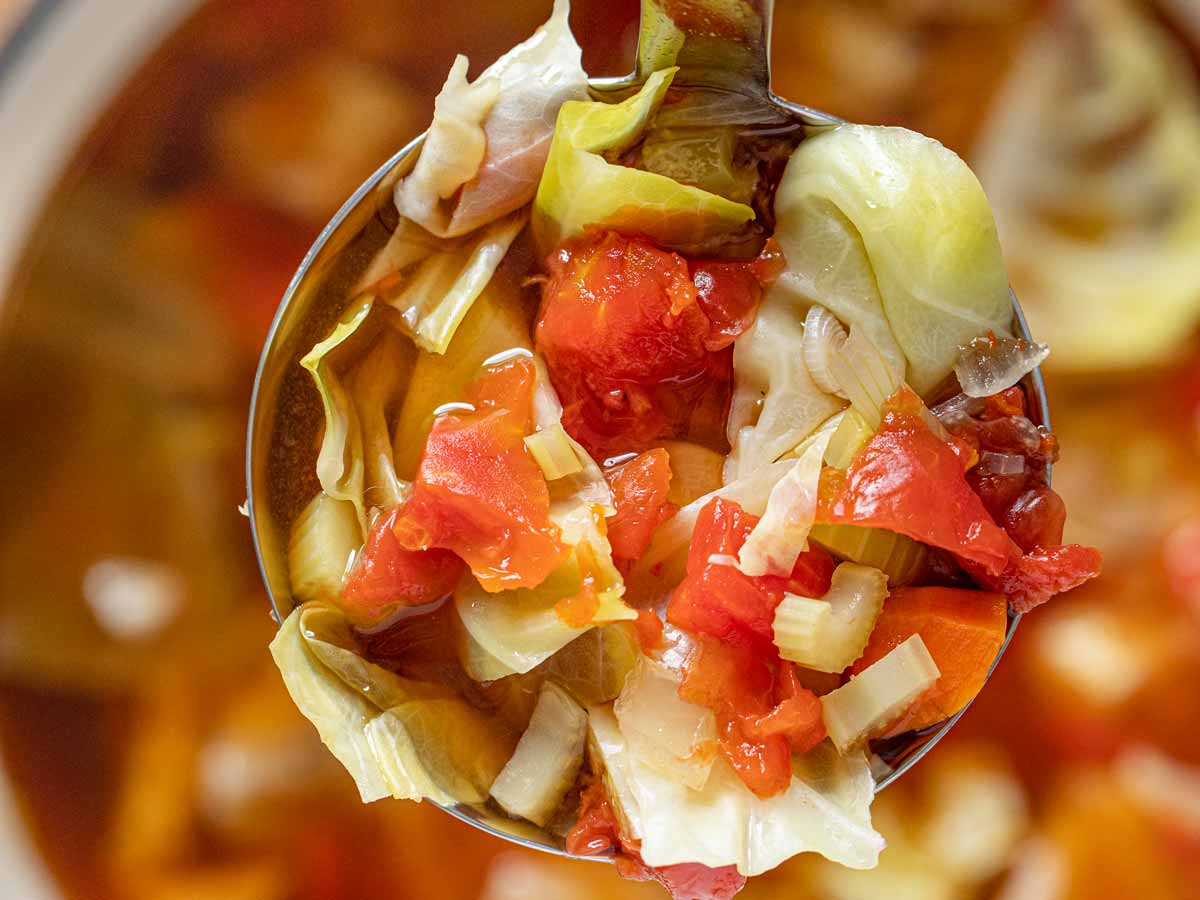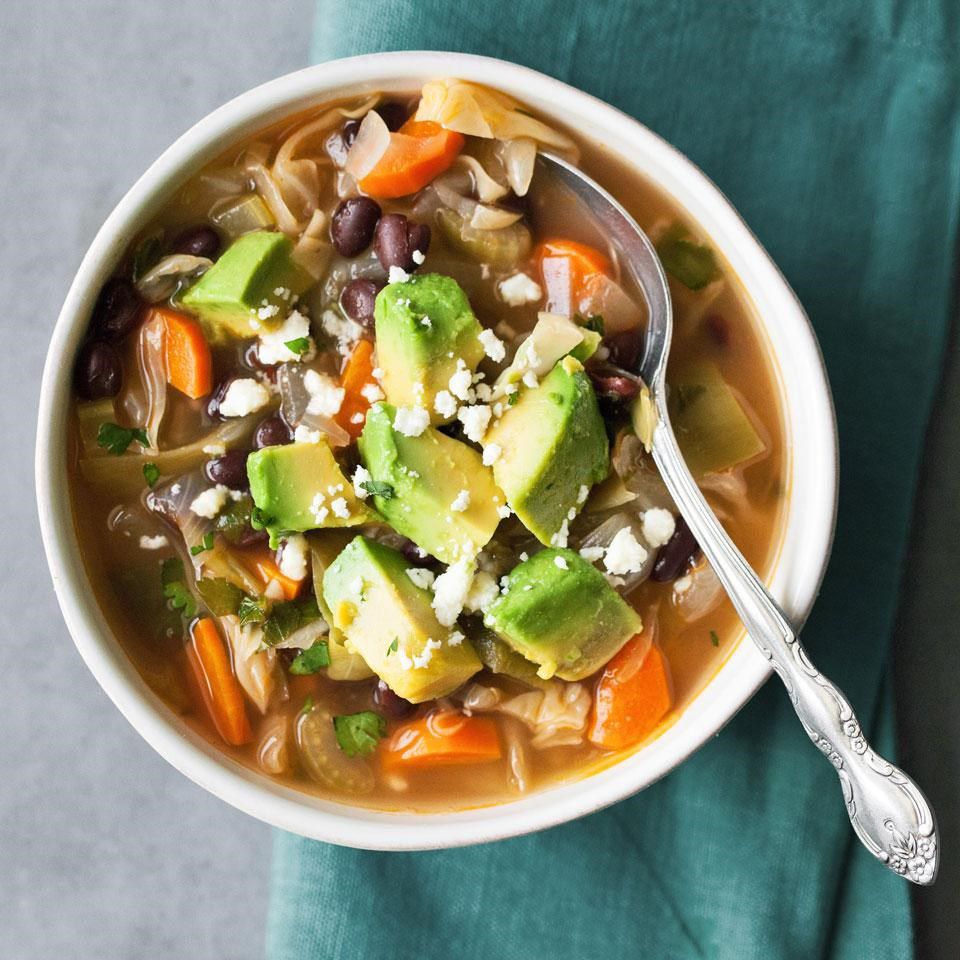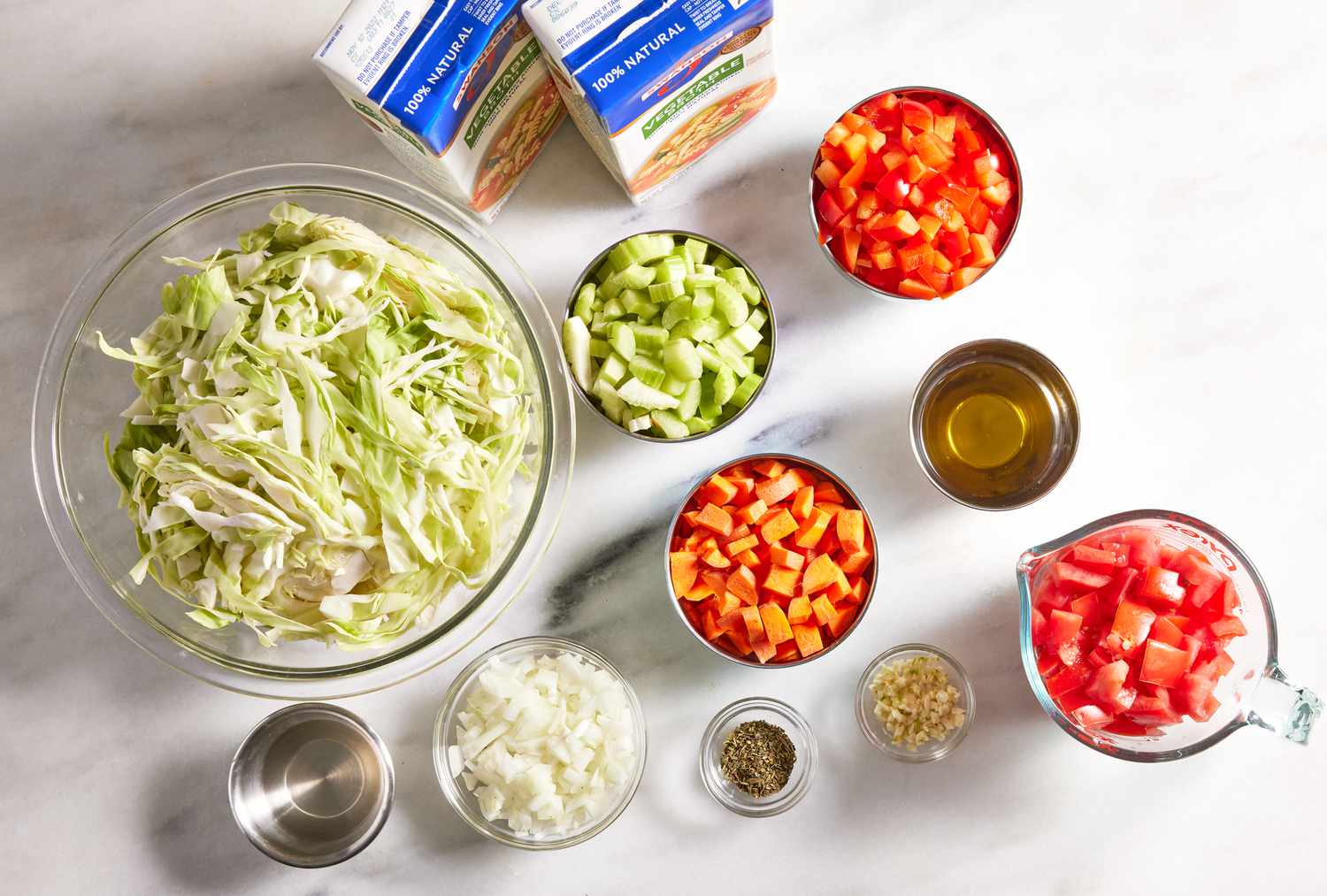Unlocking the Power of Cabbage for Weight Loss Your Complete Guide
Cabbage for weight loss is an excellent choice for anyone looking to improve their diet and shed some pounds. This leafy green vegetable is not only low in calories but also high in fiber and packed with essential nutrients, making it an ideal addition to a healthy weight loss plan. With just 22 calories per cup of shredded cabbage, it allows you to fill up without adding excessive calories to your diet.
The high fiber content in cabbage is another reason it’s great for weight loss. Fiber aids in digestion and helps maintain a feeling of fullness, reducing the likelihood of overeating. A single cup of cabbage contains about 2 grams of fiber, which supports a healthy digestive system and contributes to prolonged satiety. This can help prevent snacking on less healthy options and keep your calorie intake in check.
Additionally, cabbage is rich in vital nutrients that support overall health. It is an excellent source of vitamins C and K, both of which are important for immune function and bone health. The vegetable also provides a good amount of folate and potassium, nutrients that play key roles in cell function and heart health. These nutrients not only contribute to a well-rounded diet but also enhance the body’s ability to perform optimally, which is essential for effective weight loss.
Integrating cabbage into your diet can be both easy and enjoyable. Whether you prefer it raw in salads, cooked in soups and stews, or fermented in dishes like kimchi and sauerkraut, there are countless ways to enjoy this versatile vegetable. By making cabbage a regular part of your meals, you can enjoy its health benefits while moving closer to your weight loss goals.
In summary, cabbage for weight loss is a smart choice due to its low calorie count, high fiber content, and rich nutritional profile. It can help you feel full and satisfied while providing the essential nutrients your body needs to function properly and lose weight in a healthy manner.
| Aspect | Details |
|---|---|
| Calorie Content | Low, with only 22 calories per cup of shredded cabbage. |
| Fiber Content | High, with about 2 grams of fiber per cup, aiding digestion and fullness. |
| Nutrients | Rich in vitamins C and K, folate, and potassium, supporting immune function, bone health, cell function, and heart health. |
| Ways to Include in Diet | Can be enjoyed raw in salads, cooked in soups and stews, or fermented in dishes like kimchi and sauerkraut. |
| Overall Benefits | Supports weight loss by helping to feel full and satisfied while providing essential nutrients. |
Contents
Weight Loss Advantages of Cabbage
Cabbage is an excellent addition to any weight loss diet due to its remarkably low calorie count. This leafy green vegetable contains only 22 calories per cup of shredded cabbage, making it one of the most calorie-efficient foods available. This low calorie count allows individuals to consume larger portions without significantly increasing their calorie intake, facilitating easier calorie control and portion management. By incorporating cabbage into meals, dieters can enjoy full, satisfying dishes while maintaining a caloric deficit essential for weight loss.
Fiber plays a crucial role in weight management, and cabbage is an excellent source of this essential nutrient. With approximately 2 grams of fiber per cup of shredded cabbage, it aids in promoting satiety and prolonging fullness after meals. This helps prevent overeating and snacking between meals, crucial for maintaining a caloric deficit. Additionally, the fiber in cabbage enhances digestive health by supporting regular bowel movements and reducing the likelihood of constipation, contributing to a healthier gastrointestinal tract and aiding in overall weight loss efforts.

Beyond its low calorie and high fiber content, cabbage is packed with essential vitamins and minerals that contribute to overall health and support weight loss. It is rich in vitamin C, a powerful antioxidant that boosts the immune system and skin health, and vitamin K, which is vital for bone health and proper blood clotting. Cabbage also provides folate, important for cell function and growth, and potassium, which helps maintain normal blood pressure and heart function. These nutrients not only ensure a balanced diet but also help optimize the body’s metabolic processes, enhancing the effectiveness of weight loss efforts.
| Aspect | Details |
|---|---|
| Calorie Content | Very low, with only 22 calories per cup of shredded cabbage, facilitating portion control and caloric deficit for weight loss. |
| Fiber Content | Approximately 2 grams per cup, aiding in satiety, preventing overeating, and enhancing digestive health. |
| Key Nutrients | Rich in vitamin C (for immune and skin health), vitamin K (for bone health and blood clotting), folate (for cell growth), and potassium (for blood pressure and heart function). |
| Overall Benefits | Supports weight loss by ensuring nutrient balance and optimizing metabolic processes, in addition to aiding in portion control and digestive health. |
Innovative Ways to Include Cabbage in Your Diet for Weight Loss
One of the simplest ways to integrate cabbage into a weight loss diet is by adding it to salads. Shredded cabbage can provide a crunchy, fresh texture that enriches any salad mix. It also serves as a nutritious, low-calorie wrap alternative to traditional bread, offering a gluten-free and lighter option for sandwiches. For a quick and healthy coleslaw, mix shredded cabbage with grated carrots and a light vinaigrette dressing made from olive oil, vinegar, a touch of honey, and mustard. This simple salad is not only delicious but also a fiber-rich, low-calorie addition to any meal.
Cabbage is equally versatile when cooked, making it a fantastic addition to soups and stews. This method of preparation allows it to absorb flavors while retaining its nutritional benefits. For a comforting and healthy cabbage soup, sauté onions and garlic in a bit of olive oil, then add chopped cabbage, carrots, and celery. Pour in vegetable broth and bring to a simmer. Season with herbs like thyme and bay leaves for added flavor. This soup is not only warming and filling but also low in calories and high in nutrients, perfect for any weight loss diet.
Fermented cabbage, such as kimchi and sauerkraut, is an excellent way to incorporate probiotics into your diet. These foods are rich in beneficial bacteria that improve gut health and digestion, potentially aiding in weight loss. Kimchi, a spicy Korean side dish, can be added to salads or served alongside protein-rich foods like grilled chicken or tofu. Sauerkraut, with its tangy flavor, makes a great topping for salads, sandwiches, or as a side dish. Both options add flavor and nutrients without contributing significant calories.
While cabbage is a powerhouse on its own, combining it with other nutritious foods can create balanced, satisfying meals that support weight loss. Pair cabbage with lean proteins such as chicken breast, tofu, or beans to maintain muscle mass and extend satiety. Add other vegetables like broccoli, bell peppers, or spinach to increase the meal’s fiber and nutrient content. Healthy fats, like those found in avocados or nuts, can be included in moderation to add richness and further enhance satiety. This holistic approach to dieting ensures a variety of nutrients and keeps meals interesting and flavorful while supporting weight loss goals.
| Aspect | Details |
|---|---|
| Raw Cabbage in Salads | Used as a crunchy addition to salads or as a low-calorie wrap alternative for sandwiches. Mixed with carrots and a light vinaigrette for a healthy coleslaw. |
| Cooked Cabbage in Soups and Stews | Added to soups and stews to absorb flavors while retaining nutrients. A recipe for cabbage soup includes onions, garlic, carrots, celery, and vegetable broth with herbs. |
| Fermented Cabbage: Kimchi and Sauerkraut | Provides probiotics for gut health. Kimchi is a spicy side, and sauerkraut is used as a topping for salads, sandwiches, or side dishes. |
| Combining Cabbage with Other Nutritious Foods | Pair with lean proteins (chicken, tofu, beans), other vegetables (broccoli, bell peppers, spinach), and healthy fats (avocados, nuts) for balanced meals that support weight loss. |
Cooking Techniques and Recipes
Cabbage is a versatile vegetable that can be prepared in numerous ways to suit any dietary preference, especially for those focusing on weight loss. Sautéing cabbage is a quick and simple method that enhances its natural sweetness. A light drizzle of olive oil and a sprinkle of garlic can transform the cabbage into a savory side dish. For those who prefer a deeper flavor, roasting cabbage in the oven brings out a caramelized texture, especially when seasoned with herbs like thyme or rosemary.
Steaming is another healthy option that preserves the maximum amount of nutrients and keeps the cabbage crisp and tender. This method is ideal for those who want to maintain the integrity of the vegetable’s natural flavors. Enhancing the taste and nutritional profile of cabbage through these methods can be further achieved by incorporating spices like turmeric, which adds anti-inflammatory properties, or ginger, which aids in digestion.
A quintessential recipe for anyone on a weight loss journey is cabbage and vegetable soup. Start by sautéing onions and garlic in a minimal amount of olive oil until they are translucent. Add chopped cabbage, carrots, and any other desired vegetables like zucchini or bell peppers. Pour in low-sodium vegetable broth and bring to a simmer. Season with salt, pepper, and herbs like parsley or basil. Let the soup simmer until the vegetables are tender, about 20-30 minutes. This soup is not only filling and low in calories but also rich in nutrients and fiber.

Cabbage wraps are another innovative way to enjoy this vegetable. Use whole cabbage leaves as a wrap for a mixture of lean ground turkey or chicken, finely diced vegetables, and a hint of soy sauce or a splash of lemon for flavor. Steam or lightly sauté the filled wraps to make them pliable and serve with a side of fresh salsa or a yogurt-based sauce for added flavor without excessive calories.
Combining cabbage with lean proteins can be done effectively through stir-fries or salads. Stir-fry shredded cabbage with strips of chicken breast or tofu, adding a sauce made from low-sodium soy sauce, vinegar, and a touch of honey. Serve this over a bed of brown rice or quinoa for a balanced meal. Alternatively, mix raw shredded cabbage with grilled salmon or shrimp and dress with a light vinaigrette for a nutrient-rich, low-calorie salad.
| Aspect | Details |
|---|---|
| Sautéing Cabbage | Enhances natural sweetness with olive oil and garlic for a savory side dish. |
| Roasting Cabbage | Brings out caramelized texture when seasoned with herbs like thyme or rosemary. |
| Steaming Cabbage | Preserves nutrients and keeps cabbage crisp and tender, ideal for maintaining natural flavors. |
| Spices and Enhancements | Incorporates spices like turmeric and ginger to add anti-inflammatory properties and aid in digestion. |
| Cabbage and Vegetable Soup | A filling, low-calorie soup with onions, garlic, cabbage, carrots, and other vegetables, seasoned with herbs like parsley or basil. |
| Cabbage Wraps | Uses whole cabbage leaves to wrap lean ground turkey or chicken and vegetables, served with fresh salsa or yogurt-based sauce. |
| Combining Cabbage with Lean Proteins | Stir-fry shredded cabbage with chicken or tofu, or mix with grilled salmon or shrimp for a nutrient-rich, low-calorie salad. |
Additional Considerations
Cabbage is an excellent food choice for diabetics due to its low glycemic index, which means it does not cause a rapid spike in blood sugar levels. The fiber in cabbage also helps to slow the absorption of sugar into the bloodstream, providing a stable energy source without the highs and lows associated with higher glycemic index foods. Additionally, the antioxidants and anti-inflammatory properties of cabbage can support overall health, which is particularly important for individuals managing diabetes.
When comparing cabbage with other leafy vegetables like lettuce, several distinctions stand out. Cabbage has a denser, tougher texture, which makes it suitable for a variety of cooking methods, from raw to fermented. It also has a stronger, more robust flavor than lettuce, which tends to be milder and more watery. Nutritionally, cabbage surpasses lettuce with its higher fiber content and richer supply of vitamins and minerals, making it a more substantial and beneficial choice for those focused on weight loss and health.

While cabbage is inherently low in calories, mindful eating and portion control are essential components of any successful weight loss strategy. It is important to avoid adding high-calorie ingredients like excessive butter or oil, which can quickly counteract the benefits of this healthy vegetable. Keeping portions reasonable ensures that even low-calorie foods like cabbage contribute to a balanced diet without leading to inadvertent weight gain. Integrating cabbage into meals thoughtfully allows individuals to enjoy its health benefits while maintaining control over their overall caloric intake.
| Aspect | Details |
|---|---|
| Cabbage for Diabetics | Low glycemic index, slows sugar absorption, and has antioxidants and anti-inflammatory properties. |
| Comparison with Lettuce | Cabbage has a denser texture, stronger flavor, and higher fiber and nutrient content than lettuce. |
| Mindful Eating and Portion Control | Avoid high-calorie additions and maintain portion control to maximize cabbage’s benefits in weight loss. |
Cabbage, a humble yet powerful vegetable, plays a significant role in any weight loss journey due to its numerous health benefits. This leafy green is not only low in calories but also rich in fiber, vitamins, and minerals, making it an excellent choice for those aiming to shed pounds without sacrificing nutritional quality. The low calorie count allows for generous portions that fill you up without tipping the caloric scale, while the high fiber content promotes satiety, helping to curb overeating and unnecessary snacking. Additionally, the nutrients found in cabbage, including vitamins C and K, folate, and potassium, support overall health and enhance the body’s metabolic efficiency.
The versatile nature of cabbage means it can be incorporated into a variety of dishes, from raw salads and wraps to cooked soups and stews. Each cooking method, whether sautéing, roasting, or steaming, offers a unique way to enjoy this vegetable while preserving its health benefits. Spices and herbs can further enhance the flavor and nutritional value, making meals both delicious and beneficial. Recipes like cabbage and vegetable soup or cabbage wraps not only provide the body with essential nutrients but also keep the diet interesting and enjoyable.
However, while cabbage is a fantastic component of a weight loss diet, it is crucial to remember that successful and sustainable weight loss requires a holistic approach. A balanced diet that includes a variety of fruits, vegetables, lean proteins, and whole grains is essential for providing the body with all the nutrients it needs to function optimally. Moreover, incorporating healthy fats in moderation can further enrich the diet and aid in nutrient absorption.
Regular exercise is another indispensable aspect of weight loss. Physical activity not only burns calories but also builds muscle, boosts metabolism, and improves overall physical and mental health. Combining a diet rich in nutritious foods like cabbage with a consistent exercise routine can dramatically enhance weight loss results and contribute to long-term health and wellness.
Mindful eating and portion control are also key factors to consider. It is important to listen to the body’s hunger and fullness cues and to avoid high-calorie additions that can negate the benefits of low-calorie foods like cabbage. Being aware of portion sizes and the nutritional content of meals can help maintain a healthy balance and prevent overeating.
Given the individual nature of nutrition and health, consulting a dietitian or nutritionist can provide personalized advice tailored to specific needs and goals. A professional can help create a customized diet plan that includes cabbage and other beneficial foods, ensuring that all nutritional requirements are met while supporting weight loss objectives.
In conclusion, cabbage is an excellent ally in the quest for weight loss, offering a wealth of health benefits in a low-calorie package. Its versatility in cooking and the variety of ways it can be included in meals make it an appealing choice for anyone looking to improve their diet. However, for the best results, it should be part of a broader strategy that includes a balanced diet, regular exercise, mindful eating, and, when necessary, professional guidance. By embracing these principles, individuals can enjoy the full benefits of cabbage while achieving their weight loss and health goals.
Cabbage -Delicious Baked Red Cabbage with Apple A Versatile Side Dish
Traditional German Red Cabbage A Sweet and Sour Delight
Sweet Red Cabbage for Roast The Ultimate Game Changer
Traditional Danish Red Cabbage A Classic Recipe for Your Table
Sweet and Sour Red Cabbage A Traditional Delight
Exploring the Traditional Fried Red Cabbage Dish
Instant Pot Red Cabbage and Apples A Colorful